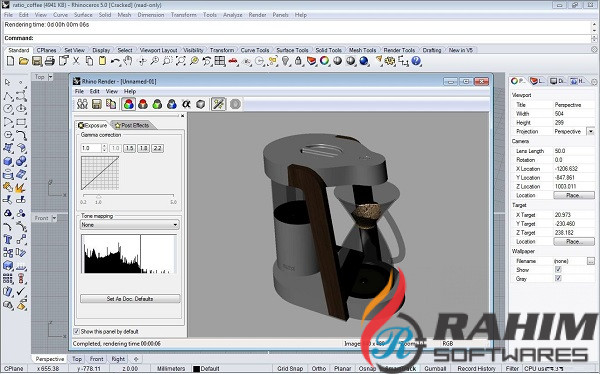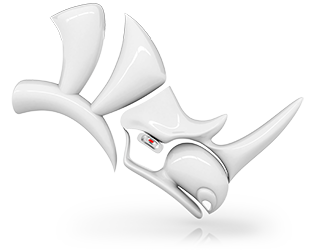
The latest processors from Intel feature “Turbo Boost” dynamic over-clocking, meaning that when the CPU senses a maximum load, it increases the processor clock speed. Using Intel as an example there are three main processor families that will be of interest to Rhino you: Rendering plug-ins like V-Ray for Rhino, Maxwell and KeyShot will, however, make use of all the available cores. We expect this situation to improve further as development continues. Rhino 6 and Grasshopper 1 are, however, more supportive of multi-threading than Rhino 5 and the Grasshopper Beta. Some complex modeling calculations are linear and don’t lend themselves well to multi-threading, (i.e., splitting the calculation between a number of processors). Most modern processors from the two leading manufacturers, Intel and AMD, are multi-core but even with 64-bit operating systems and multi-core processors, modeling applications such as SolidWorks, 3D Studio Max and Rhino will use only one processor core for modeling tasks. The main specification value that affects CPU performance is the combination of processor clock speed and the number of processor cores - So, for example, a 4GHz six-core processor will be faster than a 4GHz four core processor. If you are considering Apple hardware then the only supported solution is Apple Boot Camp virtualization is not officially supported by McNeel.
Rhino 5 for windows windows 8.1#
Windows 7 SP1 and Windows 8.1 are the only other Windows versions officially supported by McNeel however, Microsoft no longer offers mainstream support for these products.
Rhino 5 for windows windows 10#
Microsoft will support Windows 10 fully until October 2020 and provide extended support until October 2025. The “Professional” version offers additional features such as encryption, remote log-in, and creating virtual machines over the more basic “Home” version.
Rhino 5 for windows professional#
Windows 10 Professional is the preferred choice for Rhino 6, and if you are purchasing a new Windows system, then this will be the default choice. Unlike Rhino 5 there is no 32-bit legacy alternative.

Rhino 6 For Windows is a native 64-bit application. The four hardware variables that we are commonly asked about and that have the most effect on Rhino3D’s performance are the:Īs well as operating hardware, the way in which Rhino models are built and large files are referenced can make a huge difference in the speed and efficiency when working with Rhino and its associated plug-ins. But here are some pointers on the various facets that can influence performance.

The best specification for running Rhino6 For Windows ultimately depends on what you are using it for. Our suggestions represent practical recommendations for professional users and are based on new hardware specifications available at the time of writing. Please note that these requirements are different from those listed by McNeel. Even better–as flexible and powerful as it is, Rhino3D is reasonably easy to learn and use effectively.Ĥ Requirements For Rhino 6 For Windows – (as of ) With more than 2,000 enhancements as well as modeling and editing tools, you can design anything and everything.

Rhino3D (McNeel Rhinoceros 6) is the world’s most versatile 3-D modeler as it utilizes NURBS or Non-Uniform Rational B-Splines. He is an assistant professor of digital media at Eastern Michigan University.What Computer Specifications Are Required? He has taught new media and digital fabrication courses at the School of the Art Institute of Chicago and created 3D animation courses for at LinkedIn. His works have been profiled in Make magazine, Wired, and Punk Planet, and Chris has published art texts in Geez and Infinite Mile. He has shown his artwork in solo and group exhibitions internationally, including the Ann Arbor Film Festival the Intimate Instruments workshop at the Hammer Museum in Los Angeles a public installation at ZERO1 Biennial in San Jose, CA and collaborative projects in Hong Kong's Microwave International New Media Arts Festival. Chris holds an MFA from UCLA's School of the Arts and Architecture.

Working individually and collaboratively, his artwork explores telepresence, relationships, physical subjectivity, and community building with media, including games, performances, relational objects, robots, and open-source hardware/software projects. Chris Reilly is a Detroit-area artist, hacker, and teacher.


 0 kommentar(er)
0 kommentar(er)
